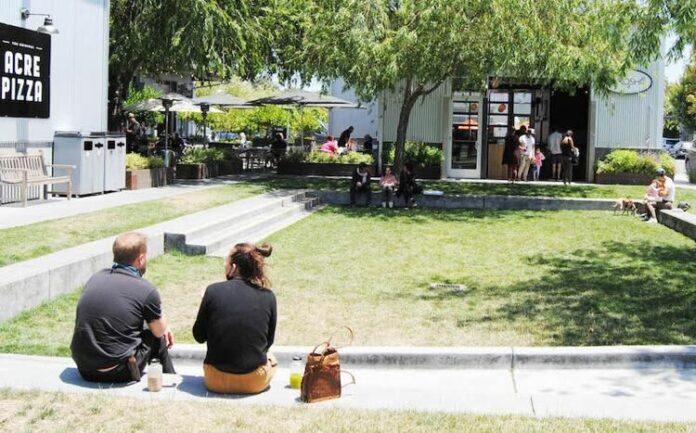But local restaurants and retail face a ‘rough road’ ahead, economist Thornberg predicts
Sonoma County government and business leaders were told this week to expect an upward economic recovery in early 2021 at local, state and national levels with unemployment going below 10% here, housing prices rising a bit and most businesses returning to business as usual.
But economist Chris Thornberg, speaking at the county’s annual Economic Development Board Fall Economic Forecast, also added a few exceptions. He said local “bread and butter” retail will continue to suffer against fast-growing internet sales and a visible number of local restaurants are likely to close their doors forever. Sonoma County’s economy also has a “social problem” of too many lower-waged jobs and wealth imparities.
“You don’t really have an economic problem,” he said. “The only thing you need to focus on is get the virus under control and wear your damned masks.”
He shared a raft of graphs, charts and data reminding everyone how strong the 2019 economy was as 2020 started. Job creation was solid, most salaries were improving, consumer purchasing was high and savings were growing faster than household debt.
Then the novel coronavirus shut almost everything in Sonoma County down on March 18. Almost 30,000 people were added to the county’s unemployment roles in March and April. Toilet paper and many other items became scarce as supply chains were disrupted and nationwide manufacturing was slowed or halted.
Thornberg said this “artificial” virus-caused recession could be greatly shortened by controlling the spread of the virus. He said the county’s economy could reopen without waiting for a vaccine by everyone wearing masks and local health officials expanding testing and tracking of all COVID-19 cases.
“There’s no such thing as a bulletproof economy but what we had (at the start of 2020) was pretty damn close,” he said.
Meanwhile, hundreds of local businesses, thousands of households and all local governments continue to face uncertain times so long as large segments of the county’s economy, local schools, outdoor gatherings and harvest tourism activities remain closed or limited. Federal stimulus money that arrived in May is now running out and rents, mortgages and other debts may go unpaid without a quick reopening of the local economy or another round of federal checks.
Once the economy reopens Thornberg predicts a healthy 34% growth in overall activity, signaling a “V recovery” as he calls it.
“This will be a six-month recovery not a seven-year recovery like the 2008 Great Recession,” he said.
But times ahead are not without more potential crises, he warned.
“We have a terrible political problem in this country. We wasted a tremendous opportunity as we faced this pandemic to come together and do decisive action,” he said referring to a divided Congress and polarized electorate.
“What did we do? We politicized the wearing of masks. How terrible is that?” he asked. “I worry about the next few months, but not because of the economy, but because of our politics.”
He disagreed with the amount and structure of the federal $2.2 trillion CARES stimulus package. He endorsed the need to supplement unemployment checks but said most of the rest of the money was poorly structured and went to the wrong places.
“Our children and grandchildren will have to pay those trillions back,” he said.
While his overall economic forecast was positive, he did cite several long-range and permanent negative impacts that were exposed by the pandemic in Sonoma County. Too many local restaurants, too many music and conference events and a lowering demand for commercial office space will lead to physical changes in local towns and the landscape, he said.
Local retail, which was losing sales and profits before the pandemic, will now see “escalated losses” as online purchasing at Amazon and elsewhere continues to take sales away from local “brick and mortar” businesses.
“Your local retail is in for a rough ride over all of next year and beyond,” he said.








